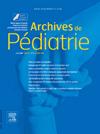人类磷酸和焦磷酸代谢遗传病
IF 1.3
4区 医学
Q3 PEDIATRICS
引用次数: 0
摘要
人体生理骨骼和牙齿矿化是一个复杂的细胞介导过程。正常矿化的先决条件包括足够量的矿物质(钙和磷酸盐 [Pi]),以启动磷灰石晶体的形成和生长,以及足够量的矿化抑制剂,如焦磷酸盐(PPi),以防止不受控制的骨骼外矿化。在这篇综述中,我们概述了人类矿化紊乱的遗传学,重点是 Pi 和 PPi 代谢及转运疾病,因为 Pi/PPi 比率是体内晶体生成的重要决定因素。与该比率平衡有关的基因变异可能会通过增加 Pi 浓度或降低 PPi 浓度导致全身或局部 Pi/PPi 比率升高,造成异位钙化;反之,变异可能会导致 Pi/PPi 比率降低,造成矿化缺陷。然而,对这些疾病进行精确的分子表征不仅有助于诊断,还有助于收集有关病理生理学和表型-基因型相关性的证据,从而改善医疗服务和开发创新疗法。本文章由计算机程序翻译,如有差异,请以英文原文为准。
Human genetic diseases of phosphate and pyrophosphate metabolism
In humans, physiological bone and tooth mineralization is a complex cell-mediated process. Prerequisites for proper mineralization include sufficient amounts of minerals (calcium and phosphate [Pi]) to initiate the formation and the growth of apatite crystals and adequate amounts of mineralization inhibitors, such as pyrophosphate (PPi), to prevent uncontrolled extraskeletal mineralization.
In this review, we provide an overview of the genetics of human disorders of mineralization, focusing on Pi and PPi metabolism and transport diseases, as the Pi/PPi ratio is an important determinant of crystal production in vivo. Variants in genes implicated in the homeostasis of this ratio may lead to a systemic or local increased Pi/PPi ratio, either by increasing the Pi concentration or by decreasing the PPi concentration, resulting in ectopic calcifications; conversely, variants may lead to a decreased Pi/PPi ratio, resulting in defective mineralization.
Owing to the implication of common pathways and, occasionally, to some extent of clinical overlap, an accurate diagnosis and understanding of the pathophysiology of these disorders may be challenging. However, precise molecular characterization of these conditions not only facilitates their diagnosis, but also helps to gather evidence regarding the pathophysiology and phenotype–genotype correlation to improve medical care and develop innovative therapeutics.
求助全文
通过发布文献求助,成功后即可免费获取论文全文。
去求助
来源期刊

Archives De Pediatrie
医学-小儿科
CiteScore
2.80
自引率
5.60%
发文量
106
审稿时长
24.1 weeks
期刊介绍:
Archives de Pédiatrie publishes in English original Research papers, Review articles, Short communications, Practice guidelines, Editorials and Letters in all fields relevant to pediatrics.
Eight issues of Archives de Pédiatrie are released annually, as well as supplementary and special editions to complete these regular issues.
All manuscripts submitted to the journal are subjected to peer review by international experts, and must:
Be written in excellent English, clear and easy to understand, precise and concise;
Bring new, interesting, valid information - and improve clinical care or guide future research;
Be solely the work of the author(s) stated;
Not have been previously published elsewhere and not be under consideration by another journal;
Be in accordance with the journal''s Guide for Authors'' instructions: manuscripts that fail to comply with these rules may be returned to the authors without being reviewed.
Under no circumstances does the journal guarantee publication before the editorial board makes its final decision.
Archives de Pédiatrie is the official publication of the French Society of Pediatrics.
 求助内容:
求助内容: 应助结果提醒方式:
应助结果提醒方式:


